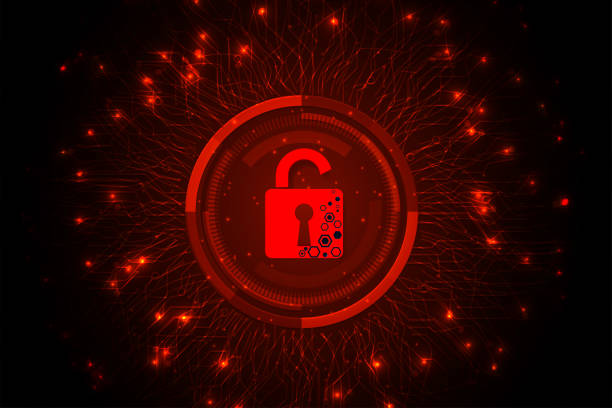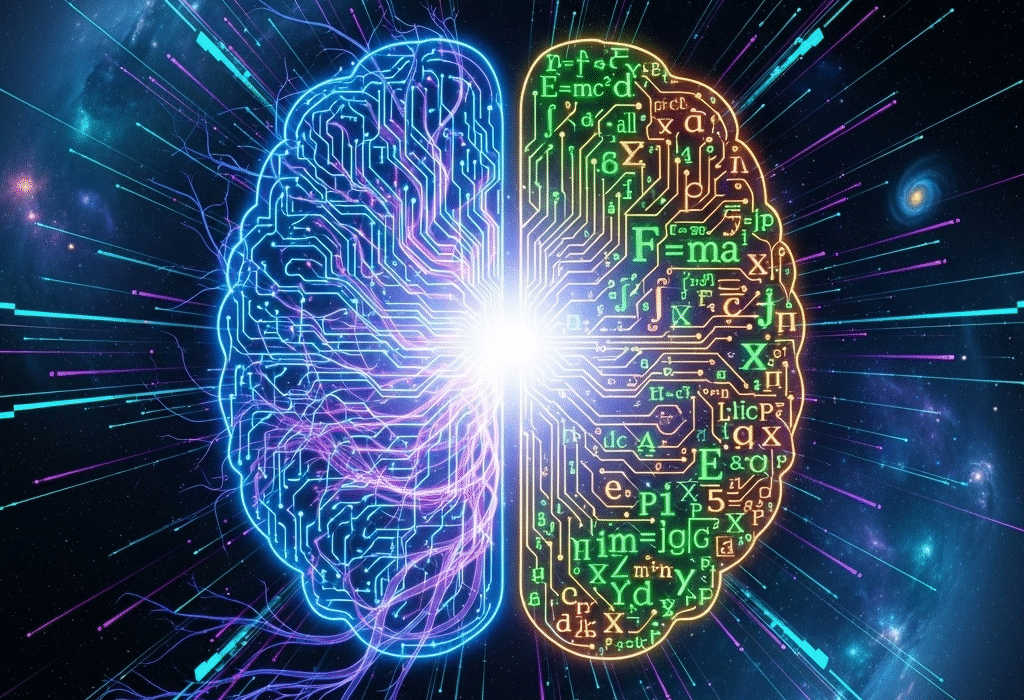In today’s world, it’s hard to imagine a single day where we don’t interact with digital systems in one form or another. From social media interactions to managing bank accounts, from shopping online to attending virtual meetings, digital technologies have infiltrated nearly every facet of our lives. We live in what is often referred to as the “Age of Digital Everything,” where digital transformation is reshaping industries, economies, and even societies. However, this rapid digitization brings with it a new set of vulnerabilities, risks, and challenges. Cybersecurity threats have evolved at an alarming rate, as malicious actors exploit these vulnerabilities to cause damage, disrupt businesses, and steal valuable data.
In this digital landscape, it’s no longer just businesses or government agencies that are under threat. Ordinary individuals, small enterprises, and even entire countries are vulnerable to the dark side of the digital revolution. As we embrace the convenience and efficiency that digital technologies offer, we must also grapple with the dangers posed by cybercriminals, hackers, and rogue states who use the same technologies to wreak havoc.
This comprehensive guide takes a deep dive into the cybersecurity threats that are dominating the age of digital everything, explaining what they are, how they work, and most importantly, how we can defend against them. We will cover everything from traditional cyberattacks like phishing to emerging threats like artificial intelligence-powered hacks. By the end of this exploration, you’ll have a clear understanding of why cybersecurity is no longer just an IT issue, but a critical component of personal, organizational, and national security.
The State of Cybersecurity in the Digital Era
The digital transformation has touched nearly every industry, including healthcare, finance, entertainment, manufacturing, and education. What was once the domain of tech giants like Google, Facebook, or Apple is now a part of daily life for small businesses, non-profit organizations, and even individuals who rely on smartphones and connected devices. As a result, the digital footprint of human activity has expanded exponentially, providing cybercriminals with a massive target to exploit.
However, despite the rising awareness about cybersecurity, the frequency, scale, and sophistication of cyberattacks have only increased. According to recent statistics, a cyberattack occurs every 39 seconds, with over 4,000 cyberattacks targeting businesses each day. The financial cost of cybercrime is projected to reach $10.5 trillion annually by 2025, and these numbers are just the tip of the iceberg. In addition to financial losses, cyberattacks can also lead to data breaches, intellectual property theft, service disruptions, and a loss of reputation.
Types of Cybersecurity Threats
The digital era has given rise to a variety of cybersecurity threats, each targeting a different aspect of digital infrastructure. Let’s break down some of the most prevalent and dangerous threats that individuals and organizations face today.
1. Phishing Attacks
Phishing is one of the oldest and most commonly used forms of cyberattack, but it remains highly effective. Phishing attacks involve tricking individuals into divulging sensitive information, such as usernames, passwords, or credit card details, by pretending to be a legitimate entity. Phishing can take place through emails, text messages, or social media messages, and often includes a sense of urgency to pressure victims into taking action.
Phishing can evolve into “spear phishing,” where attackers target specific individuals or organizations, often using personal information gathered from social media or data breaches to make their attempts more convincing. Despite growing awareness, phishing attacks continue to be one of the top causes of data breaches, with sophisticated attackers able to deceive even the most cautious individuals.
2. Ransomware
Ransomware has become one of the most notorious cybersecurity threats in recent years. It’s a type of malware that encrypts a victim’s data, rendering it inaccessible until a ransom is paid to the attacker. Ransomware attacks have hit everything from small businesses to large corporations and even government agencies. The most infamous ransomware attack to date was the 2017 WannaCry attack, which affected hundreds of thousands of computers across 150 countries, crippling organizations like the UK’s National Health Service.
Ransomware attacks have grown increasingly sophisticated, with cybercriminals employing advanced encryption techniques, multi-layered extortion tactics, and double extortion schemes, where attackers not only demand a ransom to unlock the data but also threaten to release sensitive data if the victim refuses to pay.
3. Malware
Malware is a broad category of software designed to harm or exploit any device, service, or network. Types of malware include viruses, worms, Trojans, spyware, adware, and more. Malware can be spread through email attachments, infected software downloads, or malicious websites. Once installed on a victim’s system, malware can steal sensitive data, destroy files, or provide hackers with remote access to the system.
One of the most dangerous types of malware is “Advanced Persistent Threats” (APTs), which are prolonged and targeted attacks often carried out by state-sponsored hackers. APTs can go unnoticed for months or even years, allowing cybercriminals to siphon off sensitive information or sabotage critical infrastructure.
4. Denial of Service (DoS) and Distributed Denial of Service (DDoS) Attacks
Denial of Service (DoS) attacks and their more sophisticated counterpart, Distributed Denial of Service (DDoS) attacks, aim to overwhelm a website or network with traffic, making it unavailable to users. While DoS attacks use a single source of traffic, DDoS attacks utilize a network of compromised devices (often referred to as a botnet) to launch massive attacks.
DDoS attacks can cripple online services, causing significant financial loss and disruption. They are particularly devastating to businesses that rely on e-commerce, cloud services, or customer-facing platforms. Recent examples of large-scale DDoS attacks include the 2016 attack on Dyn, a major DNS provider, which took down a significant portion of the internet in the United States.
5. Man-in-the-Middle (MitM) Attacks
Man-in-the-Middle attacks occur when an attacker intercepts and potentially alters the communication between two parties. This can happen when sensitive data is being transferred over insecure networks, such as public Wi-Fi. For instance, an attacker might intercept login credentials or financial information being sent from a user to a website.
MitM attacks can be challenging to detect because the attacker remains hidden between the victim and the legitimate service. The best defense against MitM attacks is the use of encryption protocols like HTTPS, which ensures that communications between a browser and a server are secure.
6. Insider Threats
Insider threats come from within an organization. Employees, contractors, or anyone with access to a company’s systems and data can become an insider threat, either intentionally or unintentionally. A disgruntled employee may steal company secrets or intellectual property, while an unaware employee might fall victim to a phishing scam that compromises the organization’s network.
While much of the focus on cybersecurity is on external threats, insider threats can be just as damaging, if not more so. Companies must ensure that they have proper access controls, employee training, and monitoring systems in place to minimize the risks posed by insiders.
7. Supply Chain Attacks
Supply chain attacks occur when an attacker targets a third-party vendor or service provider with access to an organization’s systems. These attacks are particularly dangerous because they exploit the trust relationships between businesses and their suppliers. A well-known example of a supply chain attack was the 2020 SolarWinds attack, where hackers infiltrated a software update mechanism used by thousands of organizations, including government agencies and Fortune 500 companies.
Supply chain attacks are hard to prevent because they target trusted partners. However, organizations can mitigate the risks by thoroughly vetting third-party vendors and implementing strict security measures across their entire supply chain.
8. Internet of Things (IoT) Vulnerabilities
The proliferation of IoT devices — from smart thermostats to wearable health trackers to connected home appliances — has introduced new cybersecurity challenges. Many IoT devices are poorly secured, offering an easy entry point for attackers to infiltrate home networks or enterprise systems.
IoT vulnerabilities can lead to a range of threats, including unauthorized access to personal information, espionage, and even the hijacking of devices for DDoS attacks. As IoT technology continues to evolve, manufacturers and consumers must prioritize device security to mitigate the risks associated with connected devices.
Emerging Cybersecurity Threats
As technology advances, so too does the sophistication of cyber threats. Here are some of the emerging cybersecurity threats that are likely to shape the future of digital security.
1. Artificial Intelligence (AI)-Powered Attacks
Artificial intelligence is becoming an increasingly powerful tool for cybercriminals. AI can be used to automate attacks, analyze vast amounts of data for vulnerabilities, and even adapt attack strategies based on a target’s defenses. AI can also be used to bypass traditional security systems, making it more difficult for organizations to detect and respond to threats in real-time.
For example, AI can be employed in “deepfake” attacks, where attackers use AI-generated fake videos or audio to deceive individuals or organizations into revealing sensitive information. AI-driven attacks are likely to become more sophisticated and harder to detect, requiring advanced machine learning techniques for defense.
2. Quantum Computing Threats
Quantum computing has the potential to revolutionize many fields, but it also presents a significant threat to traditional encryption methods. Quantum computers can theoretically break many of the cryptographic algorithms currently used to secure data. This poses a serious challenge for the future of digital security, especially as quantum computing technology continues to advance.
In response, researchers are exploring “post-quantum cryptography” — new encryption algorithms that are resistant to quantum computing attacks. While quantum computers are still in the early stages of development, organizations must begin planning for the eventual transition to quantum-safe encryption.
3. Cybersecurity in the Age of 5G
The rollout of 5G networks promises faster internet speeds and more reliable connectivity, but it also opens up new vulnerabilities. 5G’s massive scale and the increasing number of connected devices could create new opportunities for cybercriminals to exploit weaknesses in the network. Additionally, the complexity of 5G infrastructure presents challenges for securing the network and preventing potential breaches.
As 5G continues to expand, it will be essential for both telecommunications companies and consumers to implement robust security measures to protect against the risks posed by the new generation of mobile connectivity.
Conclusion: The Road Ahead
The age of digital everything brings with it immense benefits but also significant cybersecurity risks. As our lives become increasingly interconnected through the internet, IoT devices, and cloud computing, we must remain vigilant and proactive in defending against cyber threats. Organizations, governments, and individuals alike must invest in cybersecurity infrastructure, raise awareness about potential risks, and develop strategies for resilience in the face of evolving threats.
The battle between cybercriminals and defenders is a constant one, but with the right approach, we can mitigate the risks and continue to thrive in the digital era. Whether through better technology, education, or policy, cybersecurity will remain a critical issue that defines the safety and security of our digital future.






